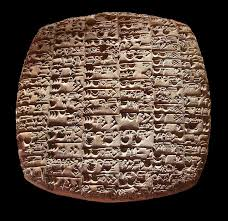Part 1 – Ancient Jewellery In The Time Before Christ (BC)
Ancient
jewellery has been much desired, admired and worshiped since the beginning of time.
For many centuries ancient jewellery had been made of precious metals
with alloys of nearly every metal known used in its manufacture. Copper, bronze
and gold were common in the Ancient African and Roman times, but most modern
fine pieces are made of sterling silver, gold, white gold, platinum, palladium
or titanium.
The oldest sign of ancient jewellery been worn was
discovered in an Archaeological dig in Morocco where shell beads were
found. These were decorative objects probably worn as
amulets or magic charms.
They date back to around circa 110.000 BC.
The next significant find were drilled shells
found in Israel and Algeria dating around circa 98.000 BC and in South Africa around circa 73.000BC.
These amulets are in the form of drilled shells and decorative sea shell beads
and it is amazing to think that some date back over 100,000 years BC.
The next evidence of ancient jewellery identified were beads
made from bone and animal teeth, dating back to about 38.000 BC which were
found in France.
Following that, fossilized shells and ivory beads dating to 28.000 BC were
found in the East Gravettian culture, located in modern Czech Republic.
At about the time the first animals were domesticated and
the wheel was invented the Thracian civilization were the first to produce objects
made from gold. Dated to 4400 BC these are the oldest golden objects known to
exist. Alluvial gold, which is found in creeks and streams, was first used
around 4000 BC by the Badarian Culture in Egypt. The Egyptians also were the
first to produce glazed steatite beads and other forms of ancient jewellery
designs based on scarab beetles, scrolls, winged birds, tigers, jackals and
antelopes. Popular gemstones of that time were carnelian, feldspar, amethyst,
chalcedony, lapis lazuli and turquoise.

This followed the import of obsidian into Southern Egypt
from Ethiopia
which was used for tools around circa 3600BC. Ancient jewellery during this
period was made of gold, lapis, and ivory. The Naqada culture was the first to
start using symbols which eventually developed into Egyptian hieroglyphics around
circa 3500 BC. By circa 3000BC carnelian, turquoise and amazonite were also
used by the Egyptians in ancient jewellery production.
At the same time as the Egyptians were discovering these
different methods of producing ancient jewellery, jade was used in China to make
weapons and ornaments. this dragon was 4th or 3rd century BC.
The use of copper between 5000- 30 BC started a new era in
the type of ancient jewellery produced.
The first known instance of glass production took place in Syria
around circa 2800BC, though it was until 1500BC that it begins to be shaped
while molten –initially it was worked like stone.
In
circa 2750 – 1200 BC we see the production of a wide range of ancient jewellery
by the Mesopotamia which was based on the
design of lives, grapes, cones and spirals. They used agate, lapis, jasper and
carnelian in the production of this ancient jewellery.
The
Bronze Age circa 2700BC saw the introduction of jet beads made from fossilised
wood.
The
casting of gold was first performed by the Egyptians around 2500BC and the
first example of granulation was discovered in Iraq around the same time. Granulation is a process that causes very
small gold beads to adhere to the surface metal, through heat, with no apparent
solder. Granulation can be applied in designs or lines to form textures or
designs. This has been a popular way to decorate and texture ancient jewellery.
Sheet gold was first produce by the Chavín culture in 1230BC.
Between 1400 - 30BC
– Greek ancient jewellery was made in the style of animals and shells and was
infused with the amethysts, pearls, chalcedony, cornelian, garnet and emeralds.
The Greeks started making intaglios and cameos around 1100 BC and these
techniques did not spread to the east until the Alexander the Great's
conquests.
Around
800BC diamonds were discovered in India but not exported until around
300-400 BC. Sapphires were first used 700 BC by the Etruscans. The Etruscans
were also the first to use amber around 600 BC.
The
earliest sign of necklaces appeared during 700BC with the use of beaded wire
forming “straps” which were found in Nimrud
(Iraq)
During 500 BC - 400 AD
-the Romans preferred seal rings, brooches, amulets and talismans that were
infused with the designs of animals and coiling snakes. Most popular gemstones
were sapphires, emeralds, pearls, amber, garnets, jet and diamonds. The first
documented use of red garnets and green emeralds was in 300 BC Greeks.
Following this in 200 BC was peridot and tourmaline. Red and blue Spinel was
first used around 100 BC.





























